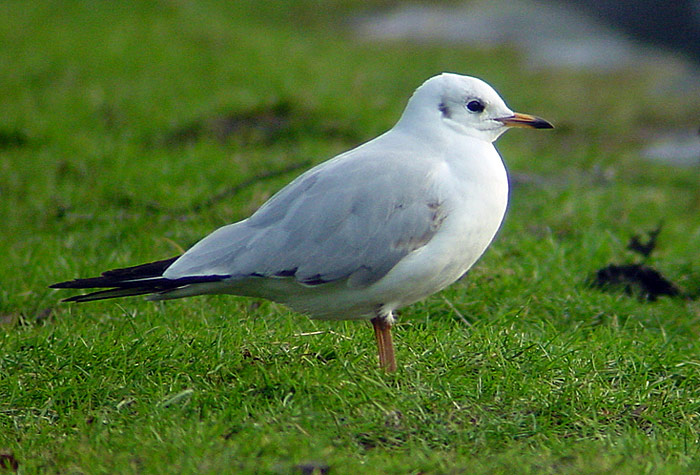 Black-headed Gull- Kokmeeuw (L. ridibundus)
Black-headed Gull- Kokmeeuw (L. ridibundus)
(last update:
Photo 7512: Black-headed Gull L. ridibundus 1cy, December 24 2002, Amsterdam, the Netherlands.
The partial autumn moult (post-juvenile moult into so-called "first winter") started right from the moment the nests was abandoned last summer and still seems to be in progress by December. In this bird, the partial moult included the head and under-parts and many of the wing-coverts. The buff-brown coloration on the head and in the lower hind-neck has been replaced: the head is most white now with a typical black spot on the rear ear-coverts and a dark patch around the eye, in this bird not really extending over the crown. The mantle and scapulars have been replaced for second generation feathers which are all grey. In the lowest row of scapulars, some feathers are still missing. All the tertials have been replaced for second generation plain grey feathers. In the greater coverts, moult is still in progress with some feathers missing, exposing the dark centred secondaries underneath. Last vestiges of the juvenile plumage can be found in the carpal edge (the outer lesser coverts) and in the outer lower lesser coverts. The outer median coverts are missing. The last juvenile median and lesser coverts have the brownish tips worn away. Note the brown hued outer primaries and the dark tail-band, typical for 1cy birds. Next moult will take place in early spring (from February to April: moult into so-called "first summer" plumage) and again will include the body and head. The hood will be more or less developed, although often with white flecking. A few individuals may include the central tail-feathers in this partial moult. |
